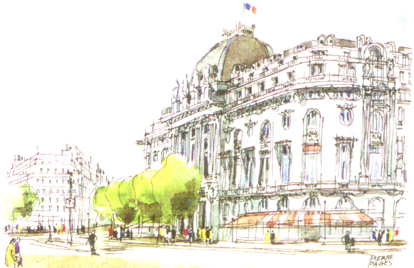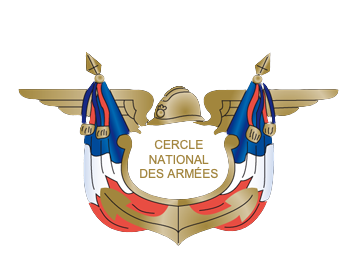The circle
This building on Place Saint-Augustin is the work of the chief architect of the national palaces, Charles Lemaresquier, member of the Institute. We owe the statues surmounting the columns of the facade to sculptors also from the Institute:
Injalbert for the “Turco”, François Sicard for the “Hairy”, Jean Boucher for the “Marin” and Paul Landowsky for the “Cuirassier”. This beautiful building houses a hotel with 89 rooms, dining rooms, an air-conditioned bar, a prestigious bistro, a fitness room, a library, reception rooms that can accommodate up to 1,000 people for cocktails and 500 meals. , a 250-seat conference room and a renowned arms room. Located in the heart of Paris, the Cercle National des Armées welcomes active, retired or reserve officers, civil servants of category “A” or assimilated from the Ministry of the Armed Forces, as well as holders of the Legion of Honor, auditors and former auditors of the Institut des Hautes Etudes de la Défense Nationale (IHEDN) or the Center des Hautes Etudes de l’Armement (CHEAr) as well as their families and guests.
The story
The Cercle National des Armées finds its origins in a presidential decree of February 5, 1887 and in a law of April 16, 1924 authorizing its establishment on the grip of the barracks of the Pépinière.
It was built from 1925 to 1927 on land liberated by the destruction of part of the Pépinière barracks, including its facade. The President of the Republic Gaston Doumergue inaugurated it in 1928.
The Cercle National des Armées de Terre et de Mer, which had previously been located on Avenue de l’Opéra, moved to Place Saint-Augustin.
The neoclassical-inspired building is the work of Charles Henri-Camille Lemaresquier, chief architect of the national palaces, born in Sète on October 16, 1870 and died in Paris on January 6, 1972 (he is buried in the marine cemetery of Sète ).
He is the son of Louis Lemaresquier, a famous poster artist of the 19th century. Father de Noël Lemaresquier, architect, who will assist him then succeed him as workshop manager at the École Nationale Supérieure des Beaux-Arts in Paris and will join him at the Académie des Beaux-arts of the Institut de France. He is also the stepfather of Michel Debré and the maternal grandfather of Jean-Louis Debré and Bernard Debré.
Pupil, friend then successor at the National School of Fine Arts in Paris, of the first Grand Prix de Rome Victor Laloux, his works remain rare:
- The Headquarters of Félix Potin in Paris, 1910, n° 51 rue Réaumur;
- The Hôtel and the Imprimerie des Journals Officiels, in Paris, rue Saint-Saëns;
- The Palais Berlitz in Paris, a block of houses between boulevard des Capucines, rue Louis le Grand, rue de la Michodière and rue de Hanover;

- The Hotel of the Havas agency in Paris;
- The Veterinary School in Toulouse;
- Sainte-Anne Hospital in Paris;
- The School of Marine Mechanics in Saint-Mandrier-sur-Mer;
- The Maritime Gendarmerie in Toulon.
Military symbols can be found on the sculpted decorations. Thus, the remarkable statues surmounting the columns of the facade are the work of sculptors, members of the institute: Jean-Antoine Injalbert for the “Turco”, François-Léon Sicard for the “Poilu”, Jean Boucher for the “Marin » and Paul Landowsky for the « Cuirassier ». On the side facade located at 35 rue Laborde, you can admire warrior attributes (helmets, pikes, standards) on either side of the window on the 1st floor, and a horse-drawn cart above the window on the second .
rules of procedure
The Cercle National des Armées is a public administrative establishment with a social and cultural vocation endowed with legal personality and which responds to a dual vocation:
- Welcoming active, retired or honorary officers. It is a place of meeting and exchange which participates in the durability of traditions, the grandeur and the prestige of the state of officer.
- Welcoming the high authorities of the Ministry of the Armed Forces, as well as their civilian and military guests, French and foreign.
